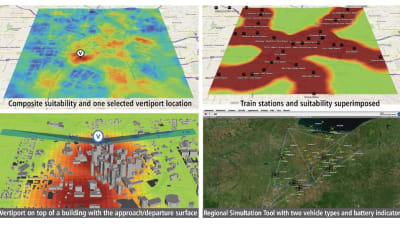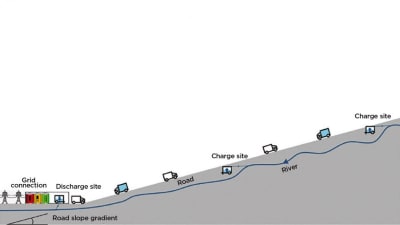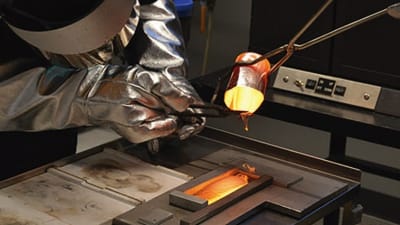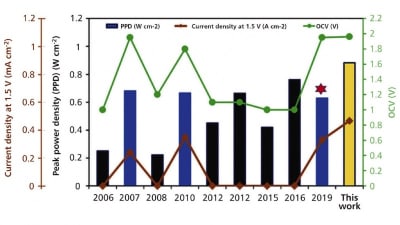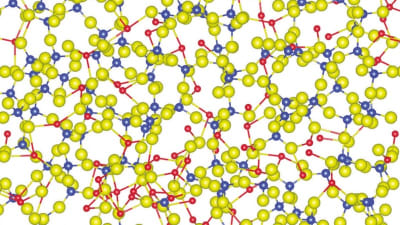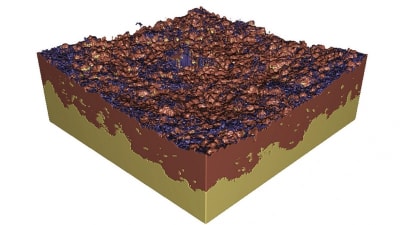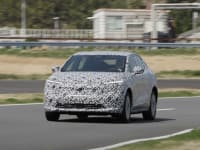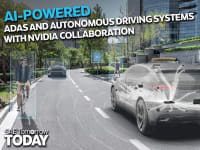49
61
169
-1
0
30
Briefs: Transportation
NASA Ames researchers have developed a novel approach for actively controlling Dutch-roll oscillations of an eVTOL aircraft by using existing outboard propellers to dampen oscillations. This novel technology avoids the need to add hardware or change the design of eVTOL vehicles to address the negative effects of turbulence. Read on to learn more.
Briefs: Unmanned Systems
Applications include vehicle and aircraft tires, sports helmets, military equipment, and seals and couplings. Read on to learn more.
Briefs: Robotics, Automation & Control
Researchers at The Ohio State University have developed new software to aid in the development, evaluation, and demonstration of safer autonomous, or driverless, vehicles. Called the Vehicle-in-Virtual-Environment (VVE) method, it allows the testing of driverless cars in a perfectly safe environment.
Briefs: Transportation
A Software Model Makes Transport Robots Smarter
Imagine a team of humans and robots working together to process online orders — real-life workers strategically positioned among their automated coworkers who are moving intelligently back and forth in a warehouse space. This could become a reality sooner than later, thanks to researchers at the University of Missouri.
Briefs: Transportation
The tiny device accurately measures acceleration in smaller navigation systems and other devices.
Briefs: Transportation
Statistical Audibility Prediction Algorithm
Predicting the extent that one sound is heard over another is difficult, yet could help engineers to better design for sound management.
Briefs: Transportation
It is widely believed that Advanced Air Mobility is poised to have a significant societal impact in the coming years to move people and cargo more rapidly and efficiently.
Briefs: Transportation
This below-the-hook device enables gentle crane placement to decrease the risk of property damage.
Briefs: Transportation
This simple, elegant invention can control flow separation resulting from the high flap deflections required by simple-hinged flap systems making such flaps a viable option for aircraft designers.
Briefs: Design
A self-aligning, self-healing system for pneumatics and cryogenics with applications in aerospace.
Briefs: Energy
Micro-supercapacitors could revolutionize the way we use batteries by increasing their lifespan and enabling extremely fast charging. Now, researchers at Chalmers University of Technology have...
Briefs: Materials
Researchers combined additive manufacturing with conventional compression molding to produce high-performance thermoplastic composites reinforced with short carbon fibers. The approach...
Briefs: Energy
In steep mountain regions, the potential for generating electricity from a small stream of water is high, however, the hydropower potential of these regions remains untapped as it...
Briefs: Materials
A new composition of germanosili-cate glass created by adding zinc oxide has properties good for lens applications. The new family of zinc germanosilicate glass has a high refractive index comparable to...
Briefs: Power
Electrification of the transportation sector is critical to future energy and environmental resilience and will require high-power fuel cells (either standalone or in conjunction with batteries) to...
Briefs: Transportation
Electric vehicle batteries typically require a tradeoff between safety and energy density. If the battery has high energy and power density — required for uphill driving or merging on the...
Briefs: Manufacturing & Prototyping
Substances such as plastics, metals, and wax are used in 3D printers to make products and parts for larger items. Products created through the 3D printing of plastics include every-thing from toys...
Briefs: Automotive
All solid materials, including glass, have a property called elastic stiffness — also known as elastic modulus. It's a measure of how much force per unit area is needed to make...
Briefs: Manufacturing & Prototyping
The low-density, graphene-based aerogel could make aircraft as quiet as a hairdryer.
Briefs: Photonics/Optics
The camera combines lasers, computers, and terahertz waves to see “unseen” details.
Briefs: Manufacturing & Prototyping
A silicon chip provides a low-cost solution to help machines see the world clearly.
Briefs: Nanotechnology
A new anode for aqueous batteries uses seawater as an electrolyte.
Briefs: Manufacturing & Prototyping
This practical technique uses magnetism to transmit electricity wirelessly to recharge electric cars, robots, or drones.
Briefs: Energy
The technology could help improve the reliability and performance of lithium-ion batteries.
Briefs: Imaging
The system could one day replace LiDAR and cameras in automated manufacturing, biomedical imaging, and autonomous driving.
Briefs: Transportation
The technology could be key to lighter, less expensive, and long-lasting batteries for future electric vehicles.
Briefs: Aerospace
Vibration-absorbing resonators could better soundproof walls and make vehicles more streamlined.
Briefs: Materials
Applications include manufacturing structural components for aerospace vehicles, cars, trucks, trains, ships, and submarines.
Briefs: Electronics & Computers
The membrane prevents dendrite formation, at least doubling the lifetime of a lithium-metal battery.
Top Stories
Blog: Manufacturing & Prototyping
2025 Holiday Gift Guide for Engineers: Tech, Tools, and Gadgets
Blog: Power
Using Street Lamps as EV Chargers
INSIDER: Semiconductors & ICs
Scientists Create Superconducting Semiconductor Material
Blog: Materials
This Paint Can Cool Buildings Without Energy Input
Blog: Software
Quiz: Power
Webcasts
 Upcoming Webinars: AR/AI
Upcoming Webinars: AR/AI
The Real Impact of AR and AI in the Industrial Equipment Industry
 Upcoming Webinars: Motion Control
Upcoming Webinars: Motion Control
Next-Generation Linear and Rotary Stages: When Ultra Precision...
 Podcasts: Manufacturing & Prototyping
Podcasts: Manufacturing & Prototyping
SAE Automotive Engineering Podcast: Additive Manufacturing
 Podcasts: Defense
Podcasts: Defense
A New Approach to Manufacturing Machine Connectivity for the Air Force
 On-Demand Webinars: Manufacturing & Prototyping
On-Demand Webinars: Manufacturing & Prototyping
Streamlining Manufacturing with Integrated Digital Planning and Simulation






